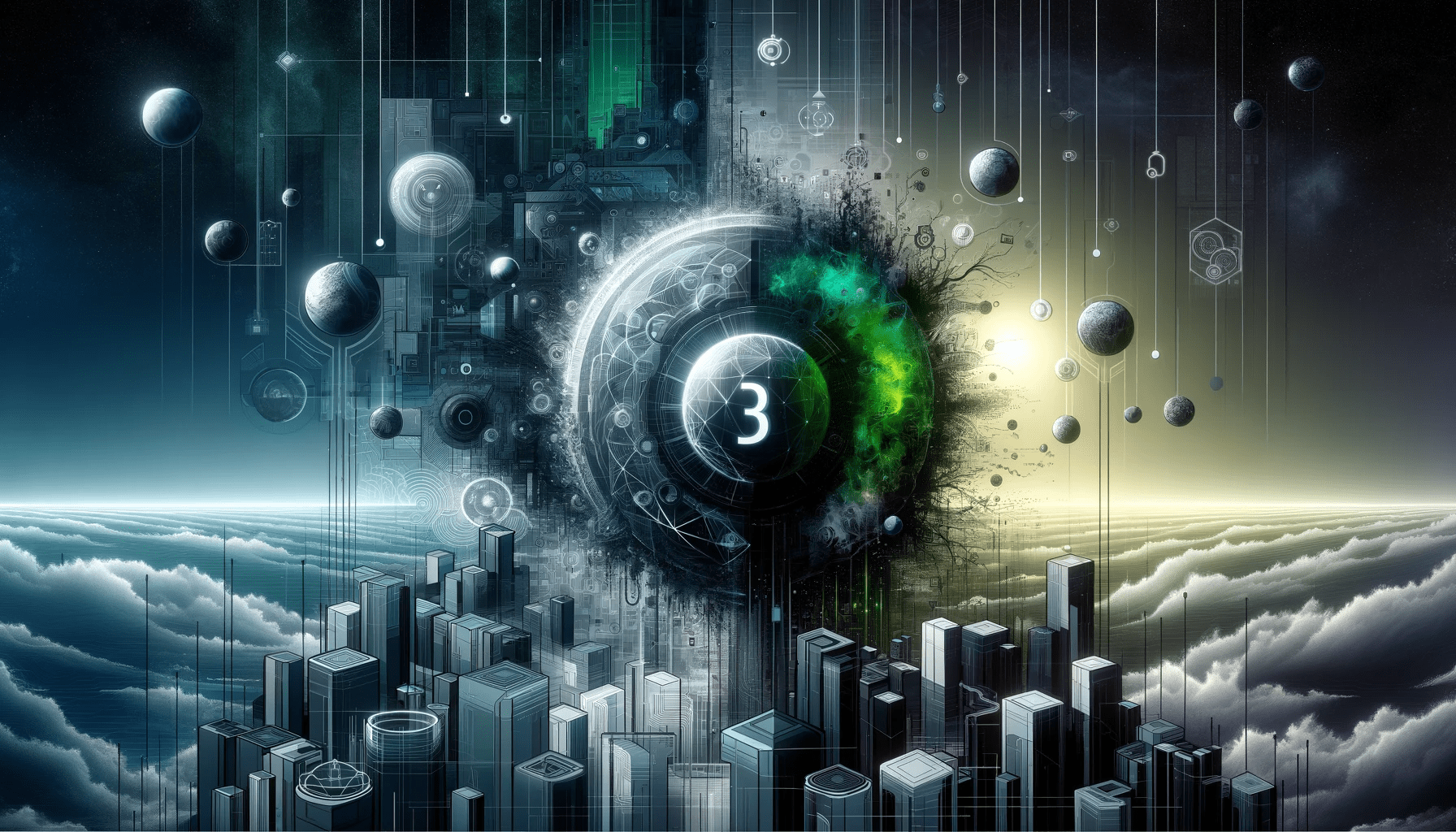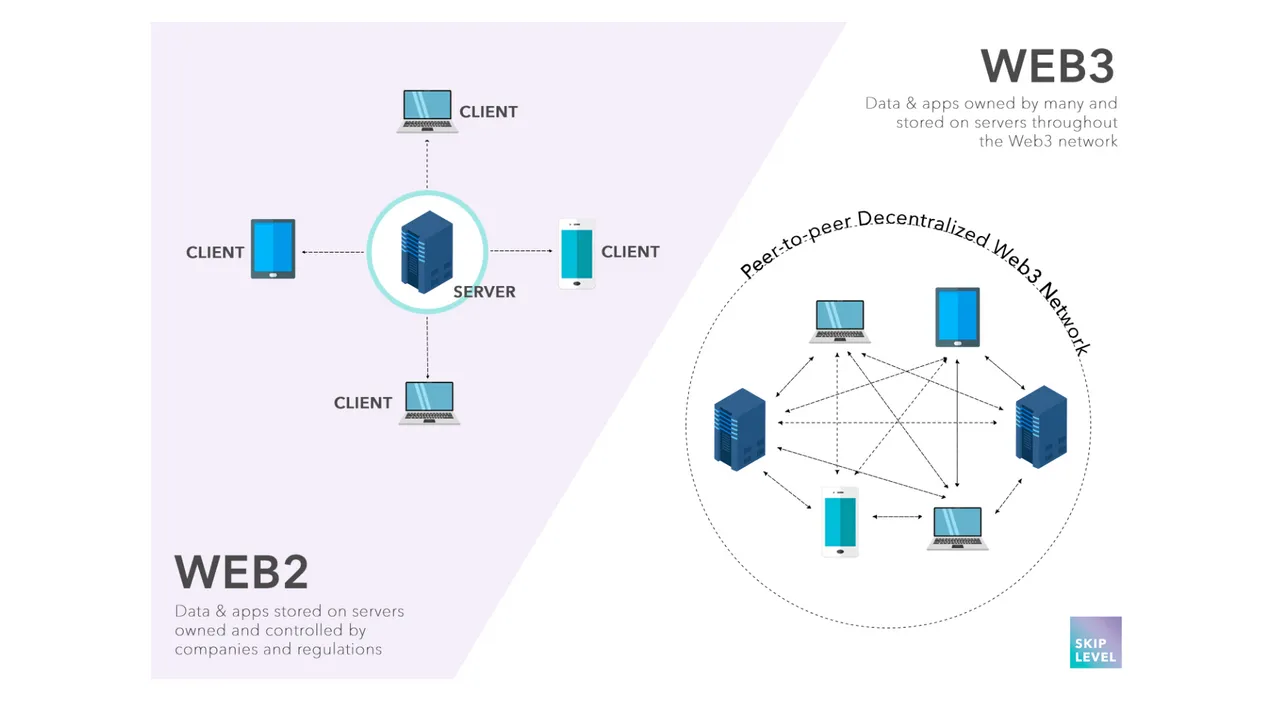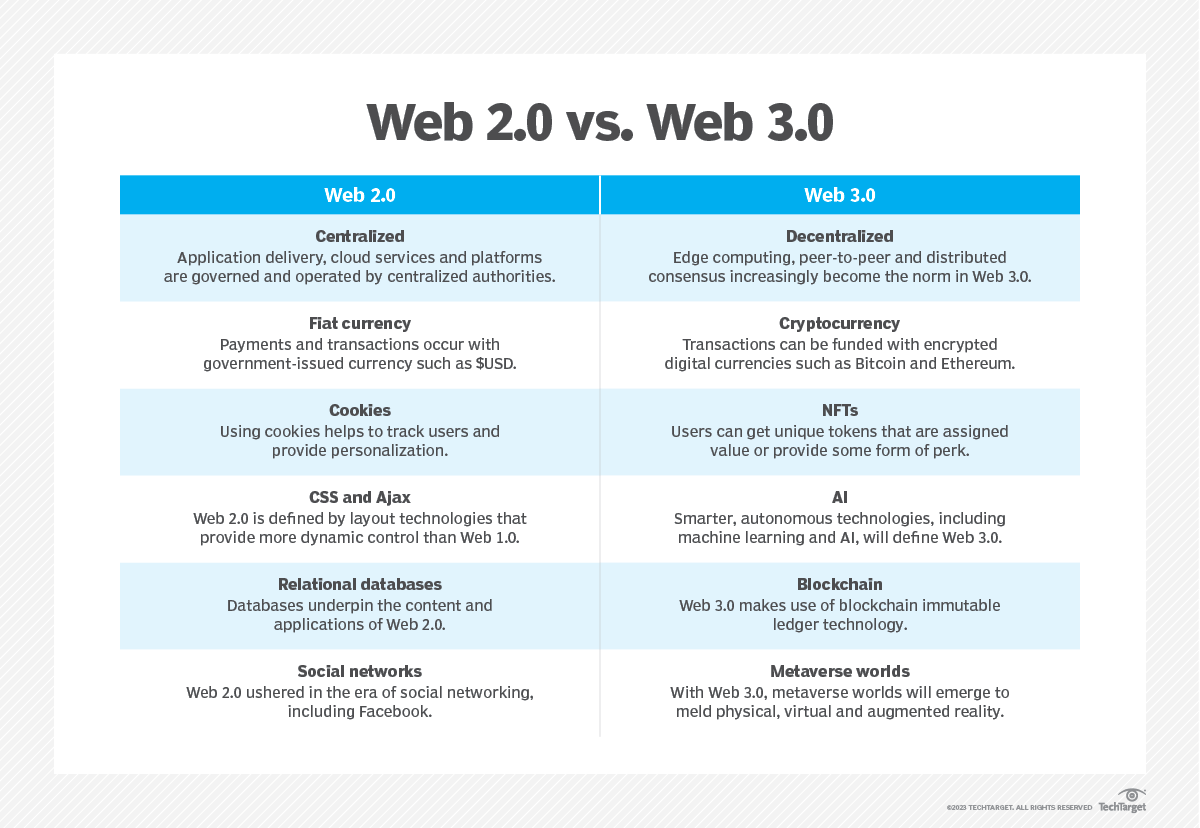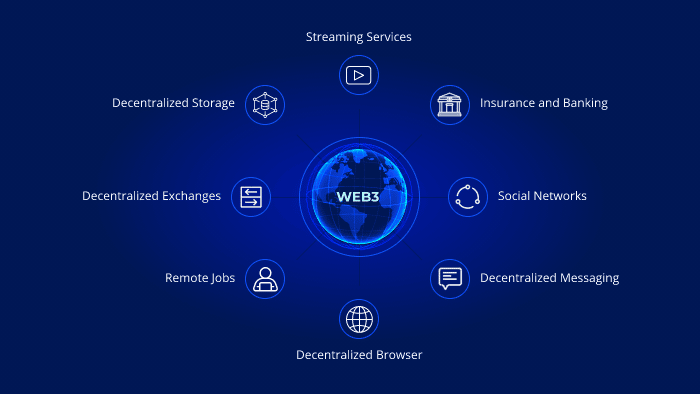Web2 vs Web3: Navigating the Transition to a Decentralized Internet

The latest improvement and development from Web2 to Web3 marks an essential transition in digital history. This step up is not just about technological advancements; it's a fundamental change in how users interact with the web, control their data, and engage with a rapidly expanding decentralized network.
The journey starts with dominated by centralized authorities and user-generated content, Web2, and takes us to a Web3 landscape characterized by greater user autonomy and blockchain technology.
It reflects a profound transformation in the digital ecosystem. This evolution represents a move towards a semantic web, where user interaction is enhanced, and a single entity does not monopolize data control. It is crucial to understand the nuances of how Web2's centralized structures led to Web3's decentralized, user-empowered Internet.
Embark on your Web3 journey with Altcoinist. Connect, create, and grow in the new digital era.
The Era of Web2: Centralized Authorities and User-Generated Content
The version of the internet that we are most familiar with, called Web2, had centralized control mechanisms. It was through intuitive web browsers that the World Wide Web (WWW) and social media became accessible to the masses, inspiring a technological revolution.
The era was marked by the rise of user-generated content, where users became contributors but lacked control over their data. Web2 relied on centralized servers or platforms, which were vulnerable to failure. This single point of failure caused significant issues for users. Web2 brought in a new era of interactive and engaging internet, but it had some limitations.
Privacy concerns became significant as a few large corporations took control of user data. How we communicate and create content on the internet has changed with Web2. While this has been great for connecting people globally, it has also raised important questions about who owns our data and how it's used. We need to consider ethics and privacy when using user information.
Transitioning to Web3: Decentralization and Empowered Users
The shift towards Web3 marks a substantial move towards a more decentralized network architecture, and central to this evolution is the use of blockchain technology and the increase of decentralized apps (dApps).
Unlike its predecessor, Web3 is not controlled by any single entity, offering a more democratic and impartial web experience. Let us embrace this era of user empowerment and greater control over our personal data and digital identities.
Smart contracts are a vital element of Web3. They make it possible to have automatic, open, and trustworthy interactions. These contracts can manage complex agreements without involving third parties. They guarantee that the deal is executed as intended.
Web3 empowers users to take ownership of their digital footprint and challenges the status quo of the centralized authorities that dominated Web2. By revolutionizing the internet, we can pave the way for a more inclusive and user-centric future where enabled users have the power to make a difference and play a more active and significant role in the ecosystem.
You can see a visual from a skiplevel showing the comparison between Web2 to Web3.

Comparative Analysis: Web2 vs Web3
Web2 and Web3 differ mainly in terms of the level of control over data, user interaction, and network architecture. The centralized authorities and platforms of Web2 led to monopolization and misuse of user data, as the decentralized structure of Web3 provides a more secure and private environment. There is no doubt that Web3 is the way forward for a safer and more equitable internet experience.
The advantages of Web3 over Web2 include:
- Greater Control: Users have more control over their data, as opposed to it being in the hands of a few large corporations.
- Enhanced Security: The decentralized nature of Web3 reduces the risk of data breaches and cyber-attacks.
- User Empowerment: Web3 enables users to have a say in the governance of their platforms and applications.
Decentralized apps still need to be developed, making Web3 difficult for average users due to the complexity of blockchain technology. Despite this, Web3 allows users to participate actively in a peer-to-peer network rather than passively consume content. The result is a new way of digital interaction and community-driven development in which users have a more significant role.
Techtarget highlights the differences between Web2 and Web3.

Pros of Web3:
Let's dive into the advantages of Web3, a new era of the internet that gives users more power.
- Enhanced Security: The decentralized nature of Web3, supported by blockchain technology, significantly reduces the risk of single points of failure, making it potentially safer than Web2.
- Reduced Data Breaches: With decentralization, the risk of large-scale data breaches is significantly diminished.
- Greater User Control: Web3 empowers users with increased control over their own data, challenging the data monopolies of centralized entities in Web2.
Cons of Web3:
While Web3 has its benefits, it's also important to look at its challenges, from usability to regulatory uncertainties.
- Lack of Regulation: The decentralized space of blockchain technology lacks regulation, which could lead to new vulnerabilities and unethical practices.
- Complexities in Use: The use of blockchain technology in Web3 can be complex, presenting challenges for both users and developers.
- Transition Challenges: The shift to Web3 can be difficult, potentially slowing its adoption and acceptance among users and developers.
The Future of the Internet: Web2 vs Web3
The impact of Web3 on various industries, from social media to e-commerce, is undeniable. It will undoubtedly create a more equitable and user-centric internet. Have you ever considered how decentralized systems can revolutionize how we conduct business with each other?
The potential of decentralized systems to facilitate direct interactions and transactions completely independent of central authorities is remarkable. This could transform industries by introducing innovative business models and upending existing ones.
However, whether Web3 can fully replace Web2 is a matter of ongoing debate. To make a fully decentralized web a reality, we must rise above the challenges related to user adoption, scalability, and regulations. For Web3 to become the new norm, it must achieve user-friendliness and accessibility that matches or tops Web2.
The infrastructure and regulations must adapt to support the latest version of the Internet, known as Web3. This new version of the Internet presents exciting opportunities, but realizing its full potential requires careful navigation of challenges and thoughtful integration into our digital lives.
According to thedatascientist, Web3 will change a lot.

Conclusion
The transition from Web2 to Web3 is an epoch-making shift in the digital world. This change focuses on a decentralized network and blockchain technology, enabling us to take control of our data, empowering users, and providing greater security. This transformation promises to transform the digital landscape and lead us to a more advanced and secure digital future.
While Web3 carries the potential to overcome many of Web2's limitations, it also faces its own set of challenges, including technological complexity and regulatory uncertainties. The future of Web3 is looking bright and holds much promise for making the digital world fairer and more user-friendly. By putting users' needs first, Web3 is improving the digital landscape.
As we embrace the transition towards Web3, we can be confident that its impact on social media and e-commerce will lead to groundbreaking business models and a complete redefinition of online interactions.
To truly bring about a fully realized Web3 world, it is imperative that we collectively embrace, adapt, and innovate within this exciting new paradigm. Our ability to do so will be the critical driver of success and progress in this transformative era.
